Hello there, if you’re reading this, you might be considering going camping for the first time, and let me tell you, it’s a wonderful experience! But if you’re not sure what equipment you need for a successful trip, don’t worry, I’m here to help you out.
As a regular and avid camper, I know how important it is to have the right gear to make your trip enjoyable and stress-free. That’s why I want to share with you this guide, with a printable checklist of the essential equipment you need for your first car camping trip.
We’ve compiled a list of items we use and love, and we’ve also included some items that we think are worth investing a little more in if you’re considering backcountry camping. However, it’s not necessary to buy everything at once. Take the time to plan and prepare, and make sure you understand the functions and characteristics of each item to avoid frustration.
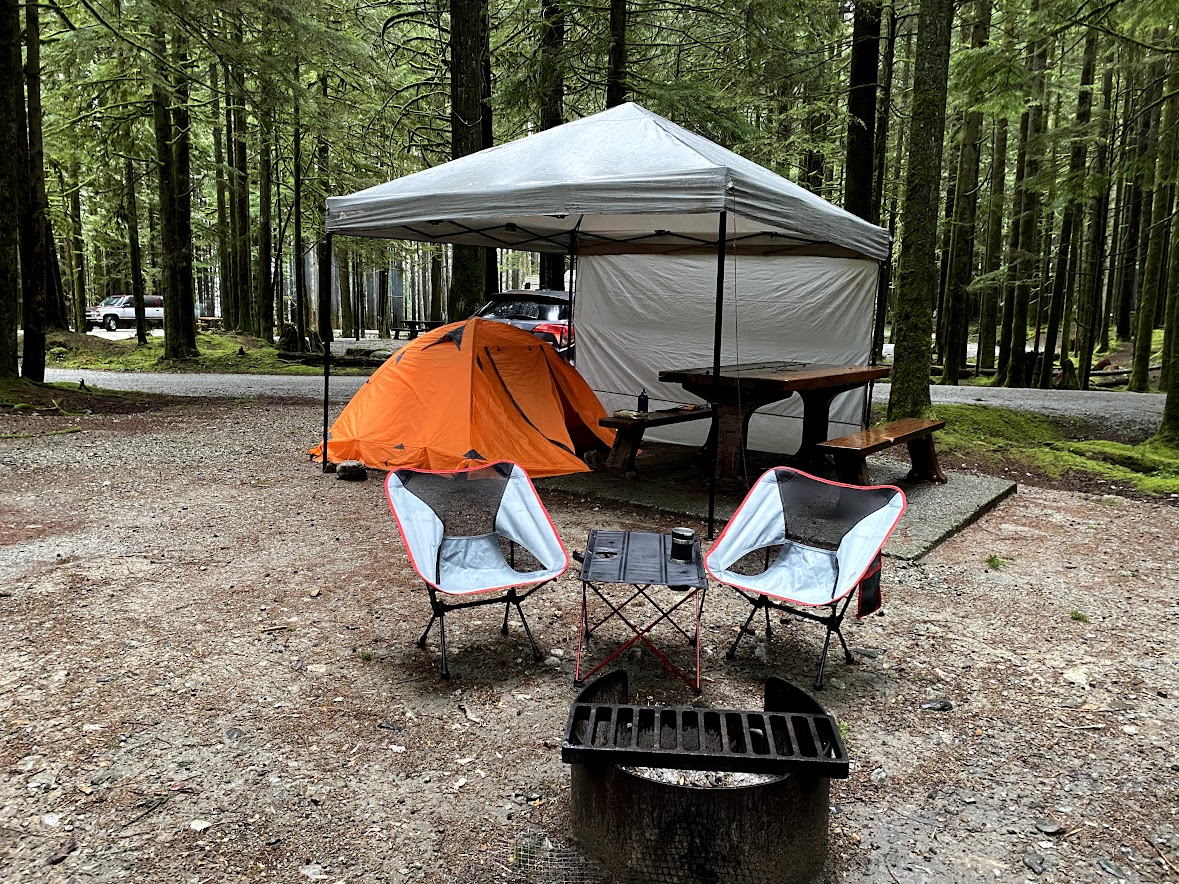
Tent
When it comes to camping, the first item that comes to mind is the tent. It’s essential to have a tent that meets your needs, depending on your purpose and the equipment you have available. When buying a tent, there are a few key features to consider, such as size, weight, impermeability, and comfort.
For car camping, comfort is more important than the weight or size of your tent. However, if you’re considering backcountry camping as well, the weight and size of your tent are crucial. If you’re on a budget and can only invest in a tent, we recommend buying one that is “all seasons” and has a second layer that goes down to the ground, providing greater comfort in rain and snow.
It’s also helpful to have an advance or space at the front of your tent, like a veranda, which can provide you with a place to cook in case of rain and intense cold, as well as keeping your equipment dry when entering and leaving the tent. The ideal weight for a backpacking tent is 2kg or less.
We have two tents, one small and one larger, which we use for car camping. Our larger tent has aluminum poles, a double layer, is designed for two people, and weighs 2.7kg. We’ve used it for the past five years and love it – it’s a great tent for the price.
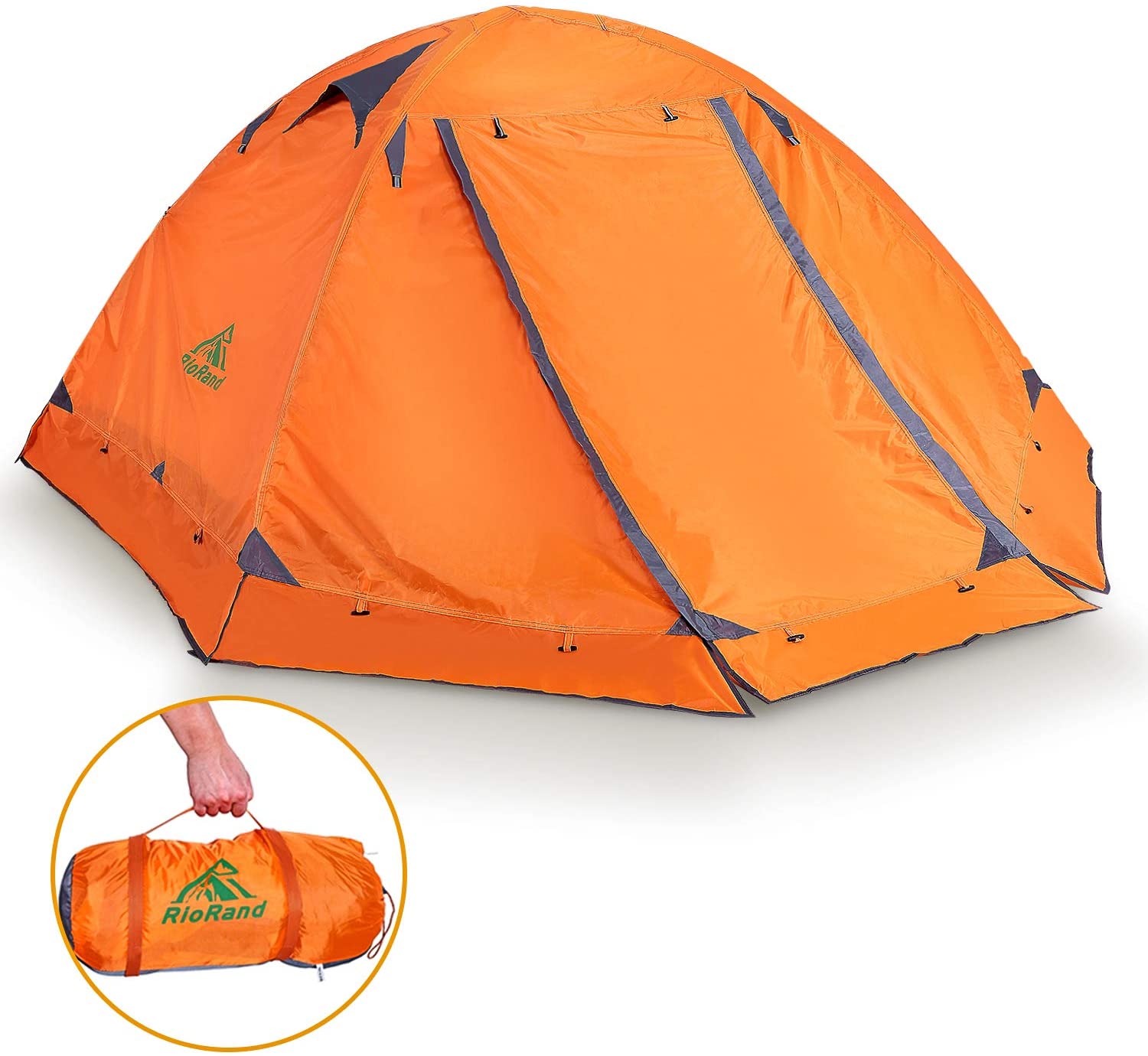
Image by Amazon
Our car camping tent is designed for four people, has fiberglass rods, and weighs approximately 5.4kg. The tent is super easy to assemble, equipped with several internal pockets, including a mesh on the roof, which is great for placing a flashlight and illuminating the tent at night. It’s super spacious for a couple, and we feel like we’re in a mansion inside it.
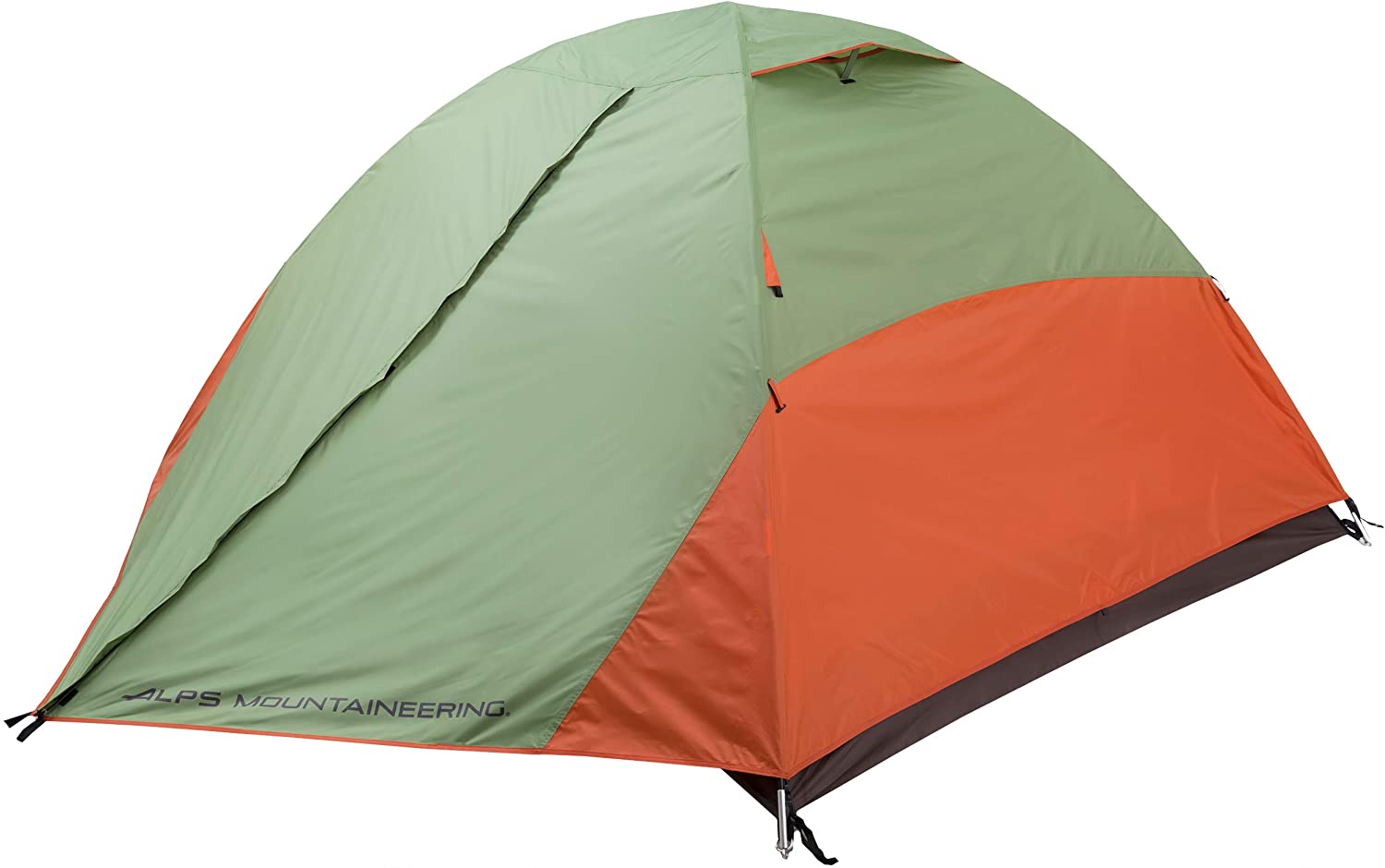
Image by Amazon
Sleeping bag
It’s essential to have a sleeping bag appropriate for the temperature you will be camping in, whether summer or winter.
Synthetic filling is ideal for summer, while down (goose down) filling is suitable for winter camping. If you’re only going to invest in one, give preference to the down one, as it can be used in summer and will be suitable in winter, while the opposite does not apply.
We recently purchased a down sleeping bag from Aliexpress, and we love it. One feature we really like about this sleeping bag is that you can choose which side you want your zipper to be on, allowing it to turn into a double sleeping bag. However, even if you’re married, DO NOT buy a double sleeping bag if you’re interested in backpacking, as it is bulky and heavy.
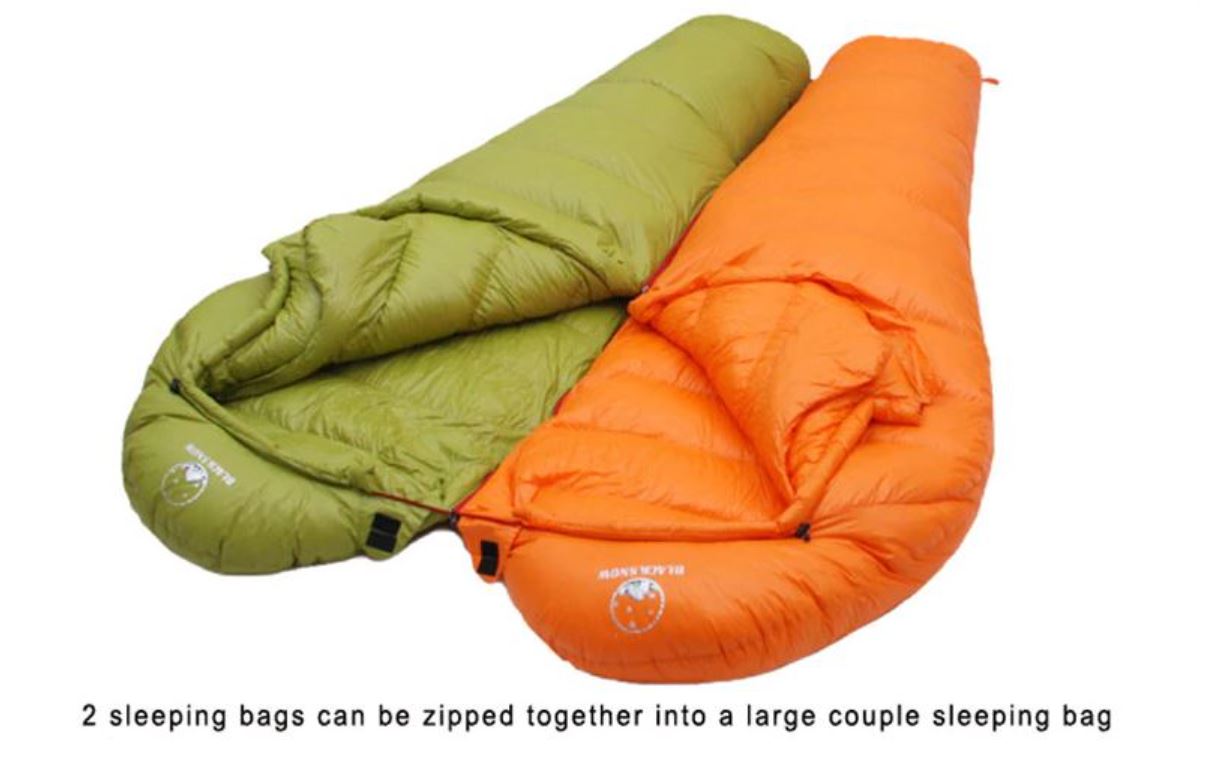
Image by AliExpress
If you’re not in a hurry to purchase the equipment, Aliexpress is an excellent cost-effective alternative, although delivery can take a few months. If you’re only going camping in summer or positive temperatures, a synthetic sleeping bag will be totally appropriate and much cheaper. Our summer sleeping bag from Mountain Warehouse is 100% polyester, weighs 0.6kg, and has a compact packaging of 30cmx13cm, with a comfortable temperature between 10 to 14 degrees Celsius and an extreme -0.
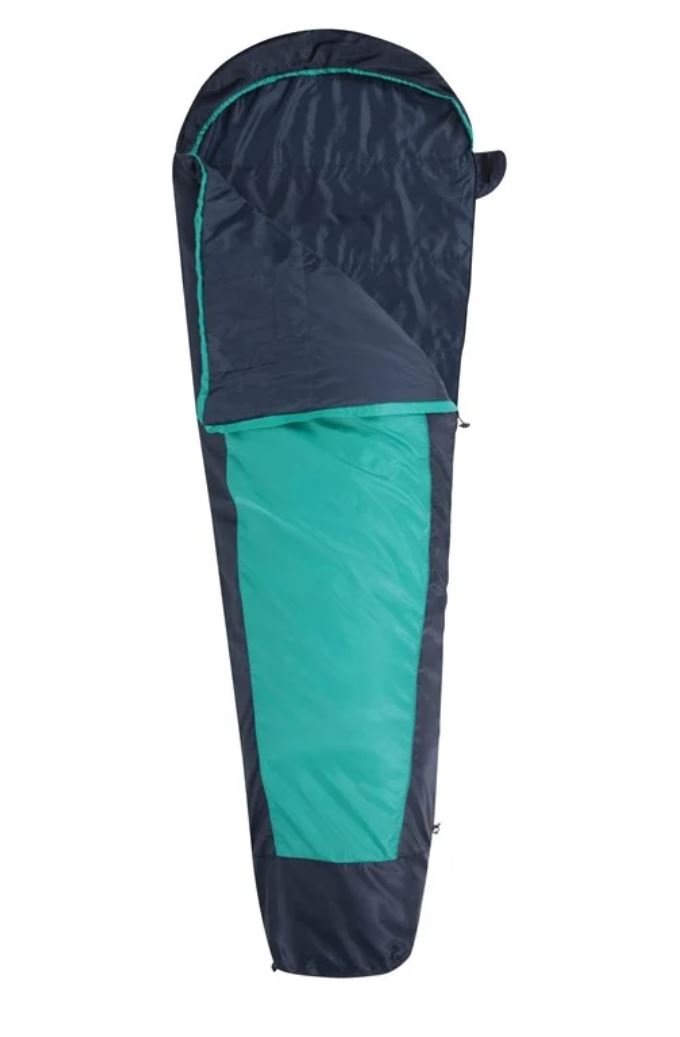
Image by Mountain Warehouse
When choosing a sleeping bag, opt for the sarcophagus/mummy format instead of the rectangular one, as the rectangular ones conserve less heat, especially for the feet. It’s also important to know how to use the sleeping bag properly. Always remember to use the adjustment string that is on the hood of the sleeping bag, so that only your eyes, mouth, and nose are uncovered to maintain the heat produced by your body inside the sleeping bag.
It’s also important to choose the sleeping bag according to the temperature scale, paying attention to the comfort (for women) and limit (for men) temperature of the sleeping bag, instead of the extreme temperature.
The comfort temperature is the temperature at which a standard woman can expect to sleep comfortably in a relaxed position, while the threshold temperature is the temperature at which a standard man can sleep for eight hours in a bent-over position without waking up. Finally, the extreme temperature is the minimum temperature at which a standard woman can remain for six hours without risking death from hypothermia (although frostbite is still possible). These assessments are made assuming the subject is inside a tent, wearing a thermal insulator, and a layer of thermal clothing, according to EN 13537 and ISO 23537 international regulations.
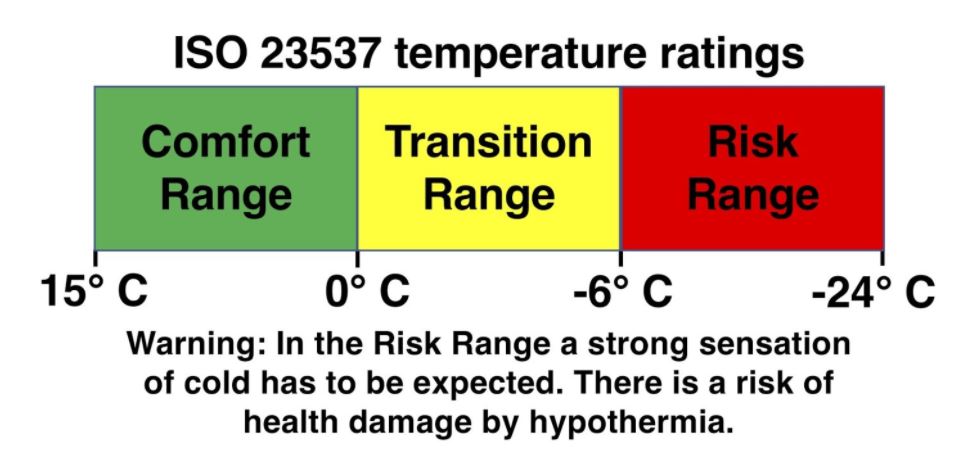
Image by BackpackingLight
Sleeping Pad
Having a comfortable sleeping pad is essential for a good night’s sleep. In our first years of camping, we used those regular inflatable mattresses, which were big and high. However, as we gained experience and the desire to go camping with a backpack as well, we realized that it was impossible due to the weight and volume it occupies. That’s why we switched to using inflatable mattresses or sleeping pads. These sleeping pads are incredibly comfortable, lightweight, compact, and quick to inflate and deflate. For these reasons, we strongly recommend investing in a sleeping pad, which will provide you with a comfortable and portable sleeping surface, whether you’re car camping or backpacking.

THERMAL INSULATION
Thermal insulation is essential for a good night’s sleep while camping. It prevents our body from coming into contact with the cold ground, which can absorb the heat produced by our body, leaving us feeling chilly and uncomfortable. Thermal insulators are lightweight, resistant, foldable, and easy to transport, making them an excellent investment for any camping trip.
When using thermal insulation, ensure that the metallic part of the insulator faces upwards to minimize radiative heat loss. This metallic part reflects part of the heat radiated by our body back to our body, while the foam part insulates contact with the ground, ensuring that we stay warm and comfortable throughout the night. Whether you’re car camping or backpacking, thermal insulation is an essential item to invest in, and it will make a significant difference in the quality of your camping experience.
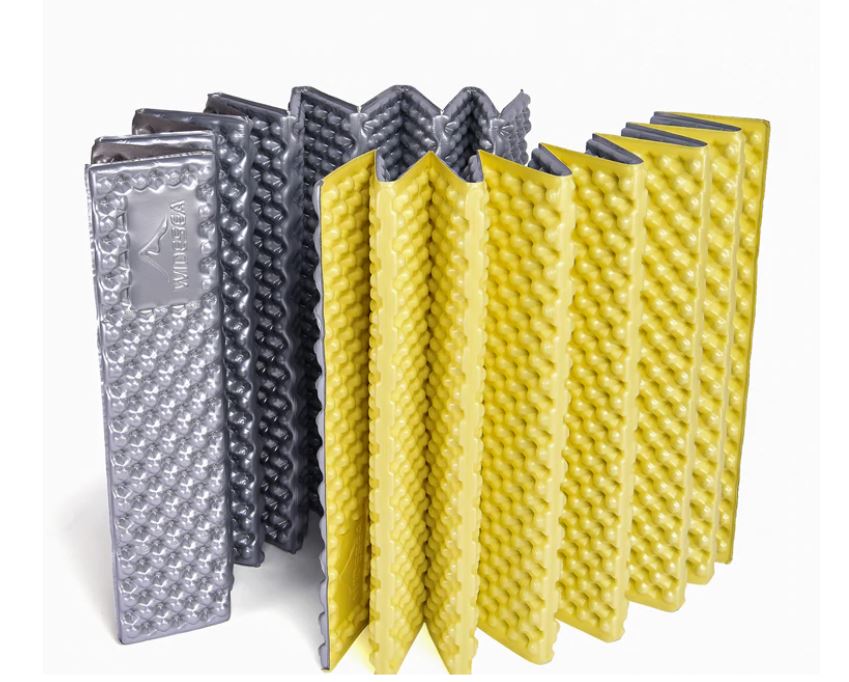
Camping Chair

Camping Cookware
Having a well-equipped kitchen kit is essential for preparing meals and enjoying the camping experience to the fullest. Since we started backpacking, we’ve cut down on the consumption of disposables by using only the utensils in the kit. This has made a huge difference in waste reduction, which is crucial to take into account.
It’s always best to opt for multi-purpose and compact equipment, especially if you’re interested in backpacking. Give preference to kits that have a lid, handles, and folding cutlery, so that everything fits and stays inside the larger pot, saving space and making it easy to find.
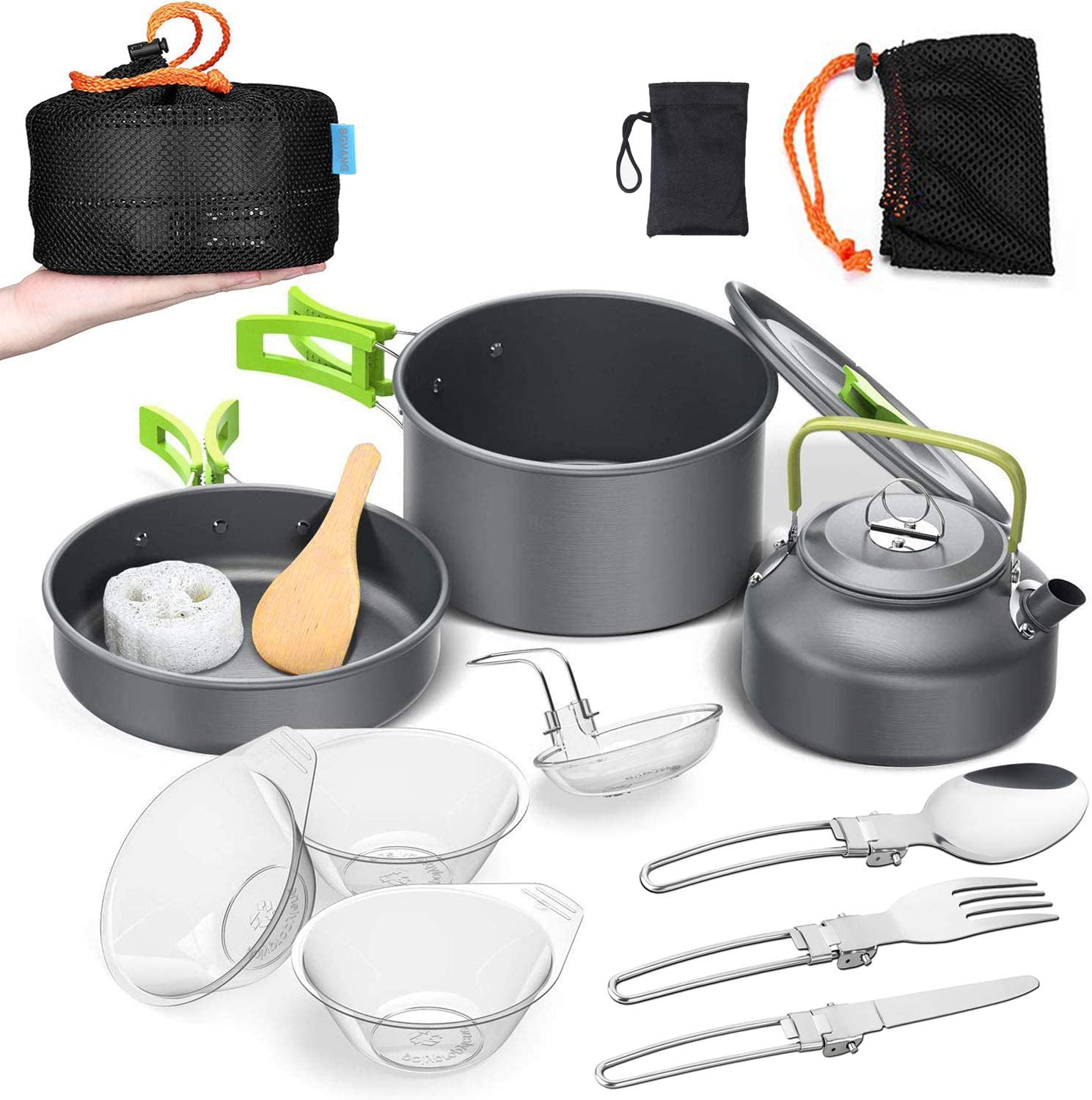
Image by Amazon
If you’re car camping, a slightly larger cookware kit may be suitable, but it’s important to remember to take only the essentials without overpacking. A well-equipped kitchen kit will allow you to cook delicious meals while camping and reduce the environmental impact of disposables.

Image by Canadian Tire
Stove
Having a reliable and lightweight stove is essential for cooking meals and enjoying the great outdoors. There are several stove models available on the market, but we particularly like the one that distributes the fire evenly at the bottom of the pan, unlike smaller models that concentrate the fire only in the middle, often causing food to burn. We also appreciate gear that comes with cases, as it’s easy to store and keeps everything organized inside the backpack.

For car camping, a stove with more stability, space, and comfort may be more suitable. The Coleman 2 flame stove, for instance, is compatible with portable gas cylinders, comes with wind protection and an automatic igniter, while the Coleman 1 flame stove is compact, has an automatic ignition, is compatible with portable spray-style gas, and comes with a sturdy plastic case for storage. Whatever stove you choose, make sure it’s reliable, easy to use, and fits your camping needs.
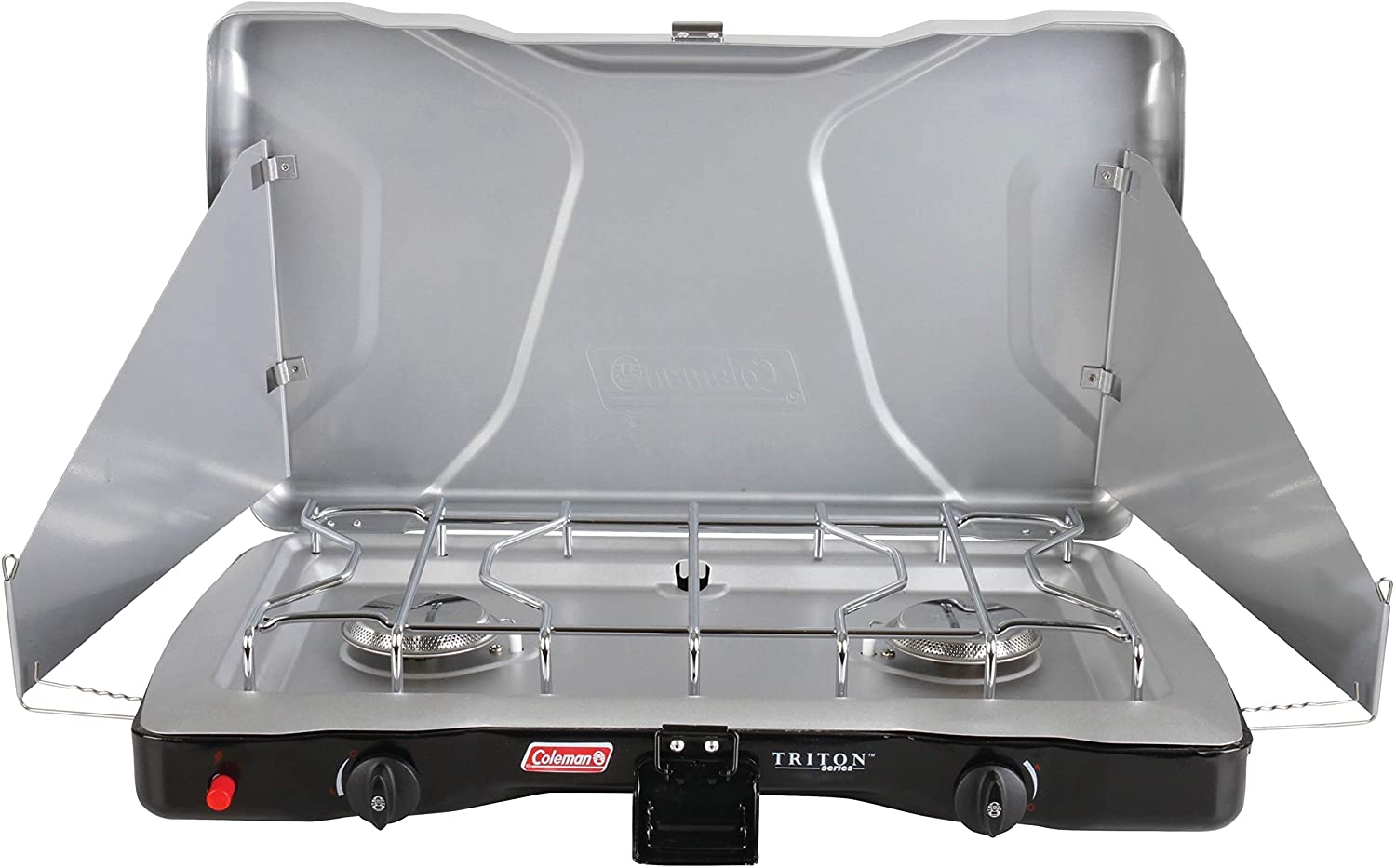
Image by Amazon
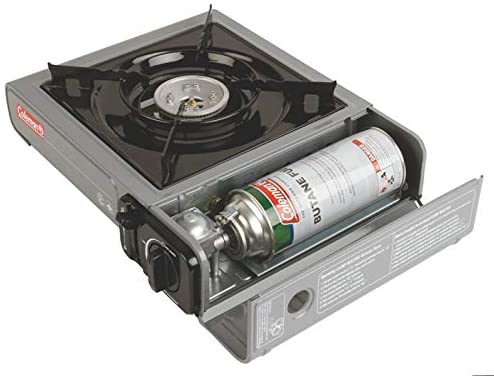
Image by Amazon
Water Bottle
Whether you’re camping, on a short day hike or on a longer backpacking trip, staying hydrated is crucial to your health and comfort.
When choosing a water bottle for camping, look for one that is durable, leak-proof, and easy to clean. Consider the size and weight of the bottle, and make sure it’s compatible with your hydration system or backpack. If you haven’t found a water bottle you love yet, camping is a great opportunity to invest in a good one.
The Nalgene Wide-Mouth bottle is an excellent option as it that’s designed to be impact resistant, easy to wash, and free of harmful chemicals like BPA and BPS.

When it comes to keeping your beverages both hot or cold, a good quality thermos is a must-have item. We particularly like the Thermos brand, which offers a stainless steel vacuum-insulated bottle that keeps liquids hot for up to 12 hours and cold for up to 24 hours.

Image by Amazon
Hiking Boots
When it comes to hiking boots, it’s important to invest in a quality pair that will provide the support, protection, and traction you need on the trail. We personally recommend the Columbia hiking boots, as we have used them ourselves and found them to be both comfortable, durable, waterproof, lightweight, and stylish. However, it’s important to note that the ideal hiking boots for you may vary depending on the hiking you plan on doing, as well as your individual foot shape and hiking preferences.
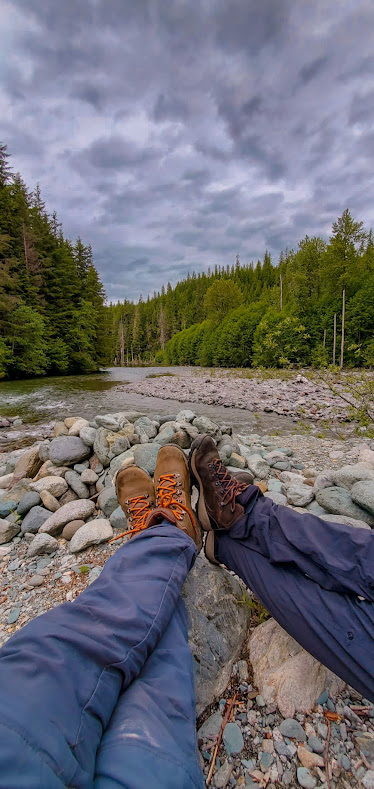
When hiking in winter conditions, it’s especially important to invest in a pair of boots that will keep your feet warm and dry. Look for boots with a waterproof and insulated design, as well as good traction for walking on snow and ice. Additionally, make sure your boots have enough room for thick socks or other layers to keep your feet warm in even the coldest temperatures. By choosing the right winter hiking boots, you can stay comfortable and safe on your winter hikes.
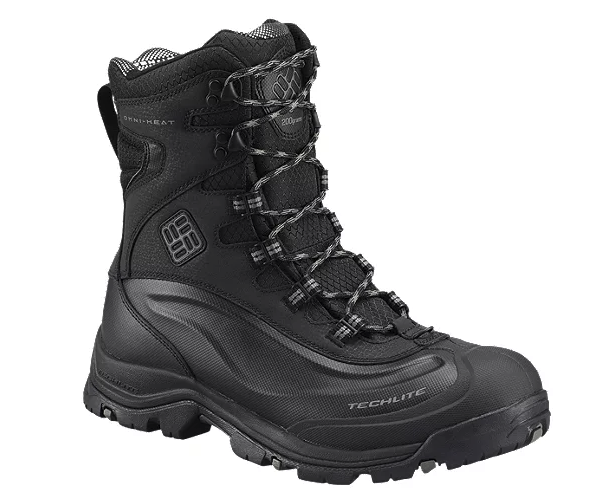
Image by Sport Chek
First Aid kit
A first aid kit is an essential item for any camping or hiking trip, as accidents and injuries can happen even on the most well-planned outings. You can purchase a pre-made kit specifically designed for wilderness adventures, or you can assemble your own kit with customized items to suit your needs.
We personally like to buy a pre-made kit and then add our own items to it. However, it’s important to keep in mind that your first aid kit should be stored in a waterproof container or sealed in small ziplock bags to protect its contents from moisture. We’ve learned from experience how frustrating it can be to get the band-aids wet and render them useless accidentally. So, be sure to take the time to properly store and maintain your first aid kit to ensure it’s always ready to use when you need it most.
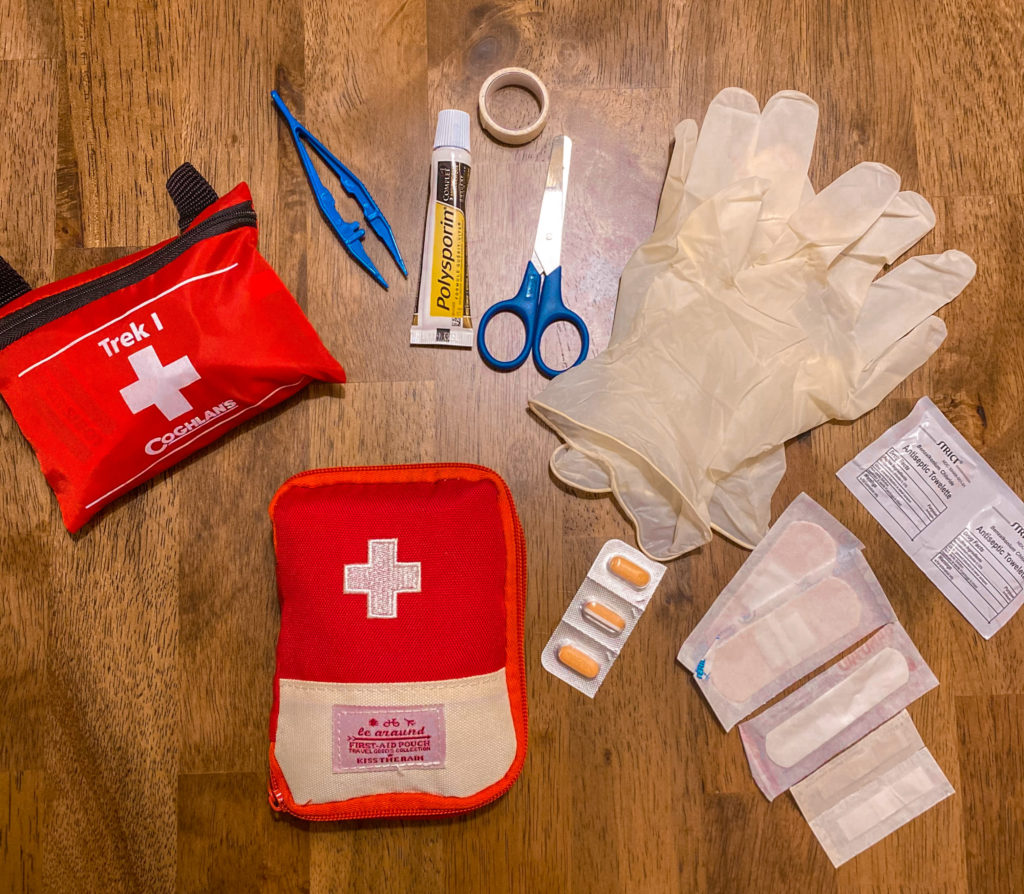
Headlamp
A good headlamp is an essential item for any camping or hiking trip, as it provides you with a hands-free source of light for activities such as cooking, setting up camp, or hiking at night. When choosing a headlamp, it’s important to look for certain features to ensure it meets your needs. A minimum IPX4 waterproof rating is important to protect the headlamp from moisture and make it suitable for outdoor activities. It’s also recommended to choose a headlamp with at least 500 lumens and double or triple battery/stack to ensure it has enough power to last for an extended period of time. A red light feature can be helpful to preserve night vision, but it’s not mandatory.
We personally bought a great headlamp on AliExpress, which is affordable and meets all of our needs
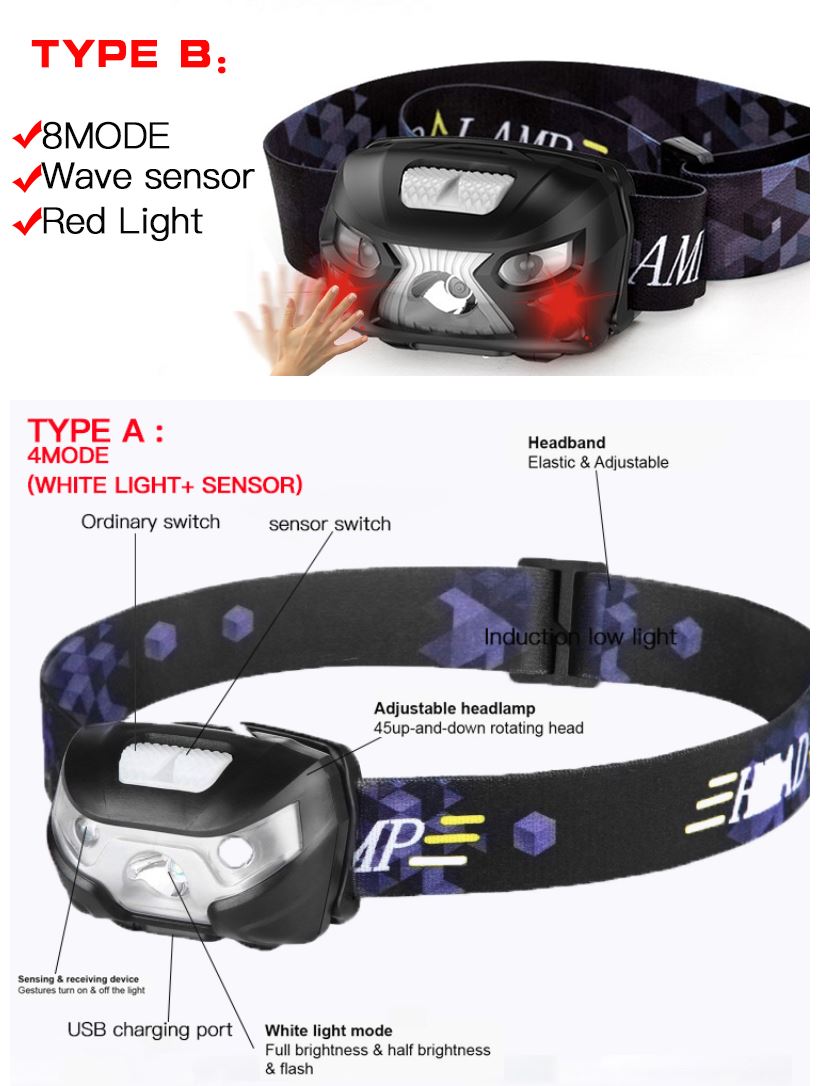
Image by AliExpress
However, if you want something from a top brand with excellent quality, we highly recommend checking out this option from Petzl.
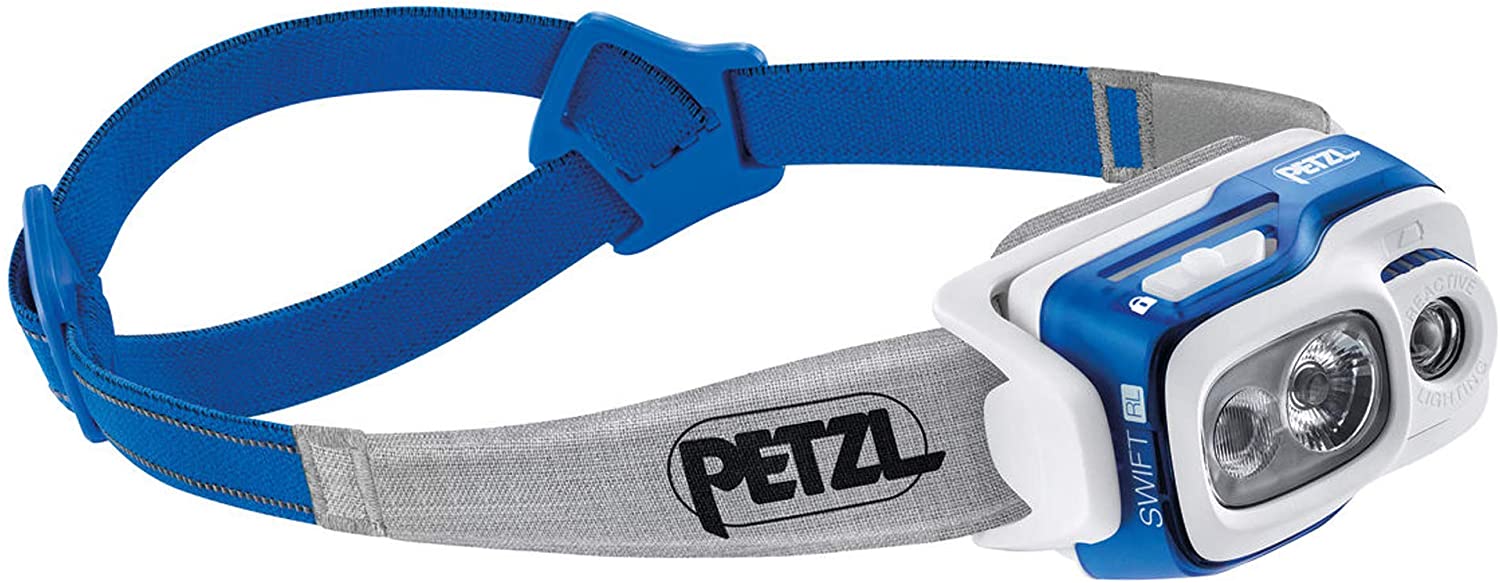
Image by Amazon
Additionally, having a lantern for your campsite can be helpful, and we recommend a waterproof option with multiple light modes and a decent power capacity for car camping.
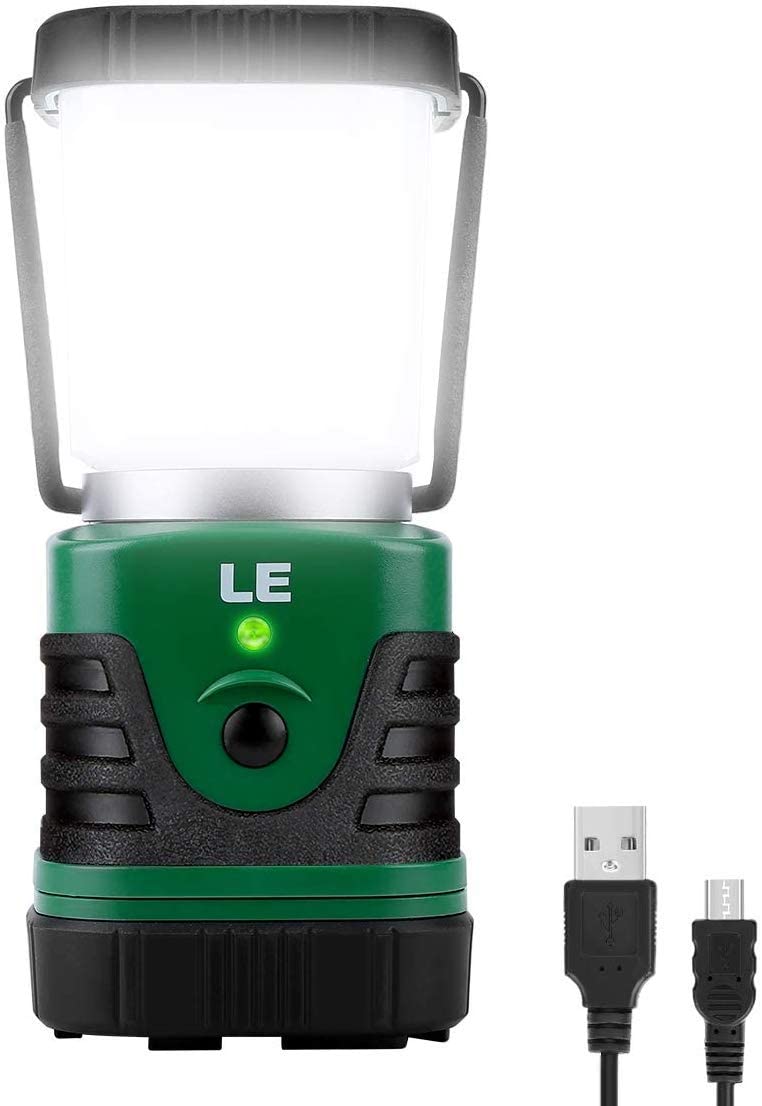
Image by Amazon
MATCH, LIGHTER OR KIT TO MAKE A FIRE
Having the means to start a fire is essential for camping, not only for cooking but also for warmth and comfort. While a normal lighter may suffice, it is always wise to have a backup method. Consider investing in a storm-proof match which can withstand windy and wet conditions.
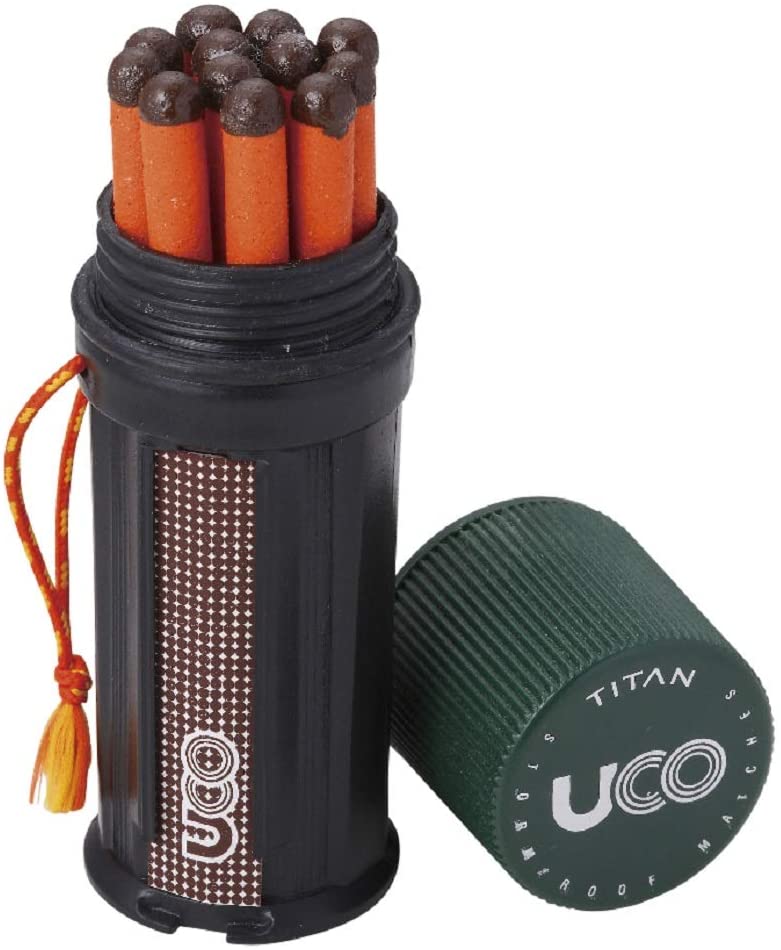
Image by Amazon
For those seeking a more advanced and reliable option, a waterproof and windproof lighter that is also rechargeable can be a good choice.
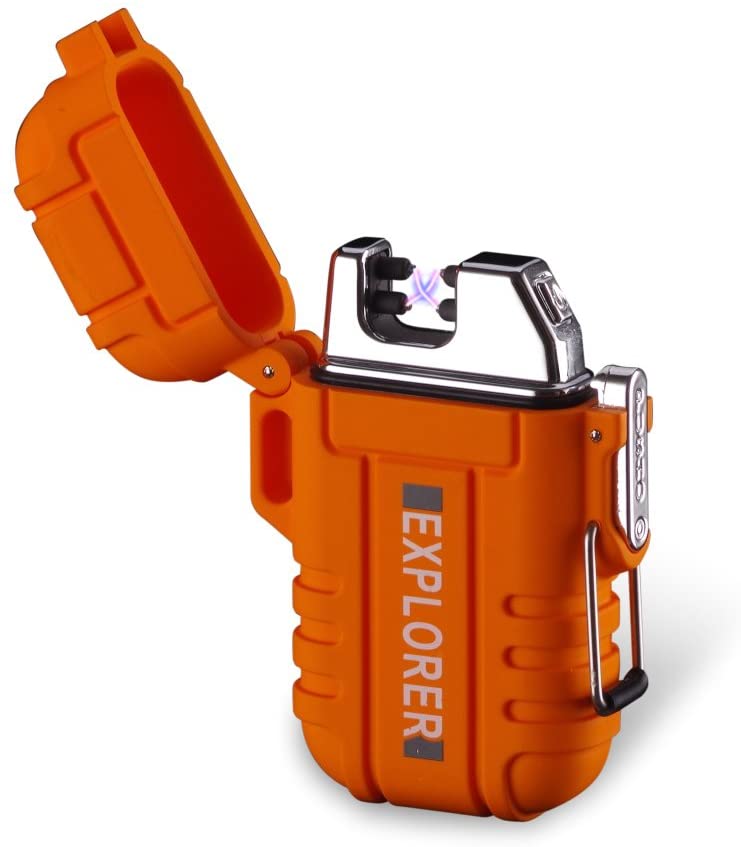
Image by Amazon
Knife
A portable knife is an important tool to have on a camping trip, as it can be used for a variety of tasks such as opening packages, preparing food, or even as a survival tool. When choosing a knife, it is important to consider its portability and versatility. A multipurpose knife with various tools and functions can be a great choice, allowing you to tackle multiple tasks with just one tool. Just remember to handle the knife with care, keep it sharp, and always use it safely and responsibly.
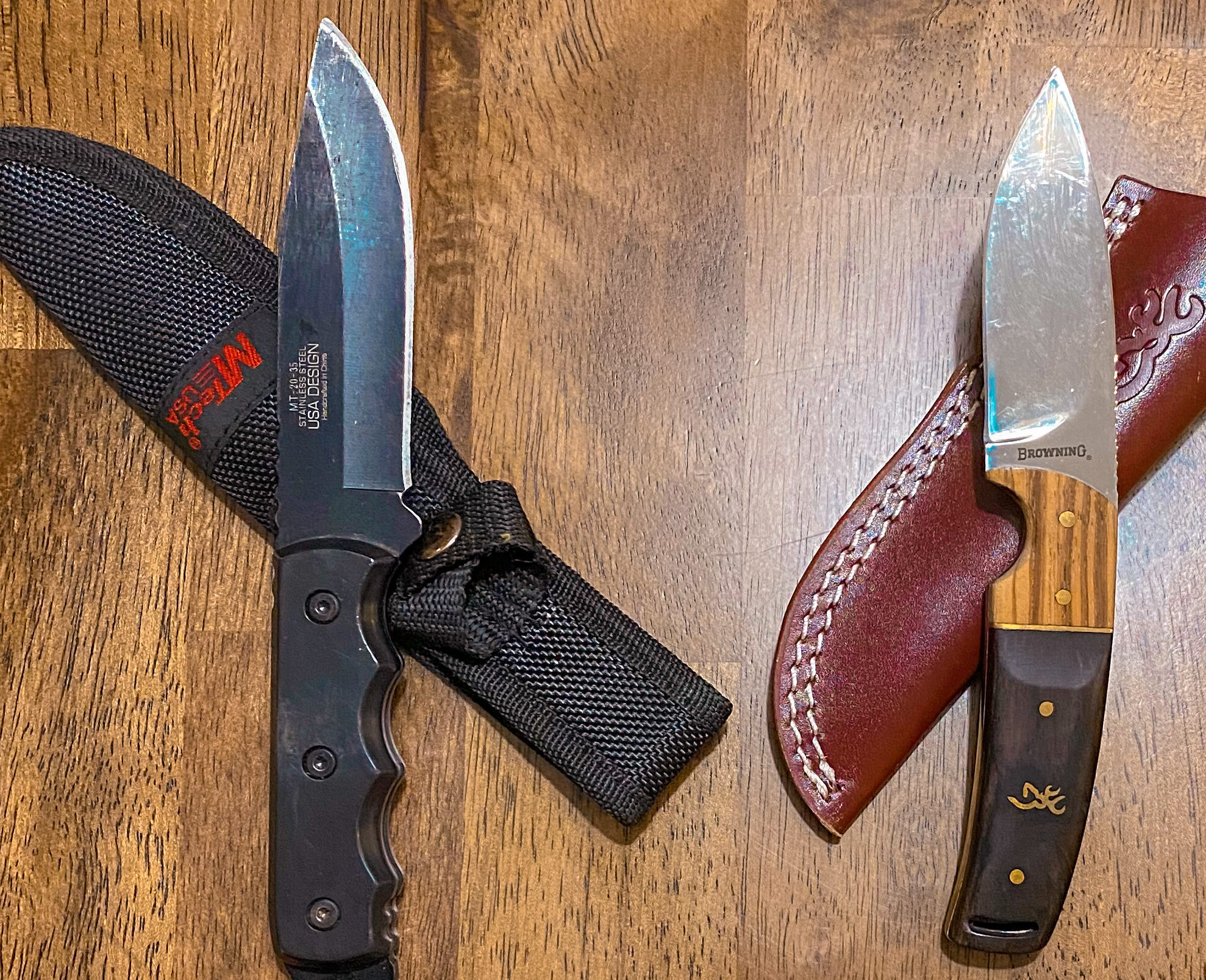
10 Essentials
Carrying the 10 essential items is crucial for any outdoor activity, whether it’s a simple day hike or an overnight camping trip. These items include navigation tools such as a compass, map, GPS or satellite device, lighting such as flashlights and spare batteries, a first aid kit, a knife or switchblade, a lighter, match or iron rod for starting a fire, an emergency shelter like an aluminum thermal blanket, sun protection like sunscreen, lip balm, cap or hat, and glasses, extra food, extra water and a water filter, and extra clothing. It’s important to make a list of all these items and double-check before setting off on your next adventure. These items can be the difference between a safe and enjoyable trip or a dangerous and uncomfortable one.

Bear Spray
Bear spray is a necessary safety precaution when camping or hiking in areas where wild animals like bears or cougars are present. It’s important to understand how to properly use and store bear spray, as well as to have it accessible and ready to use in case of an emergency. Make sure to purchase a reputable brand and to check the expiration date before heading out on your trip. Additionally, it’s important to always be aware of your surroundings and to take precautions to prevent encounters with wild animals, such as keeping a clean campsite and making noise while hiking to alert animals of your presence.
Cooler
When camping with a group of people or family, having a cooler or thermal box to store food and drinks is a must-have item. A cooler on wheels is perfect for families with children, providing practicality and keeping items well refrigerated, while also serving as a support for glasses.
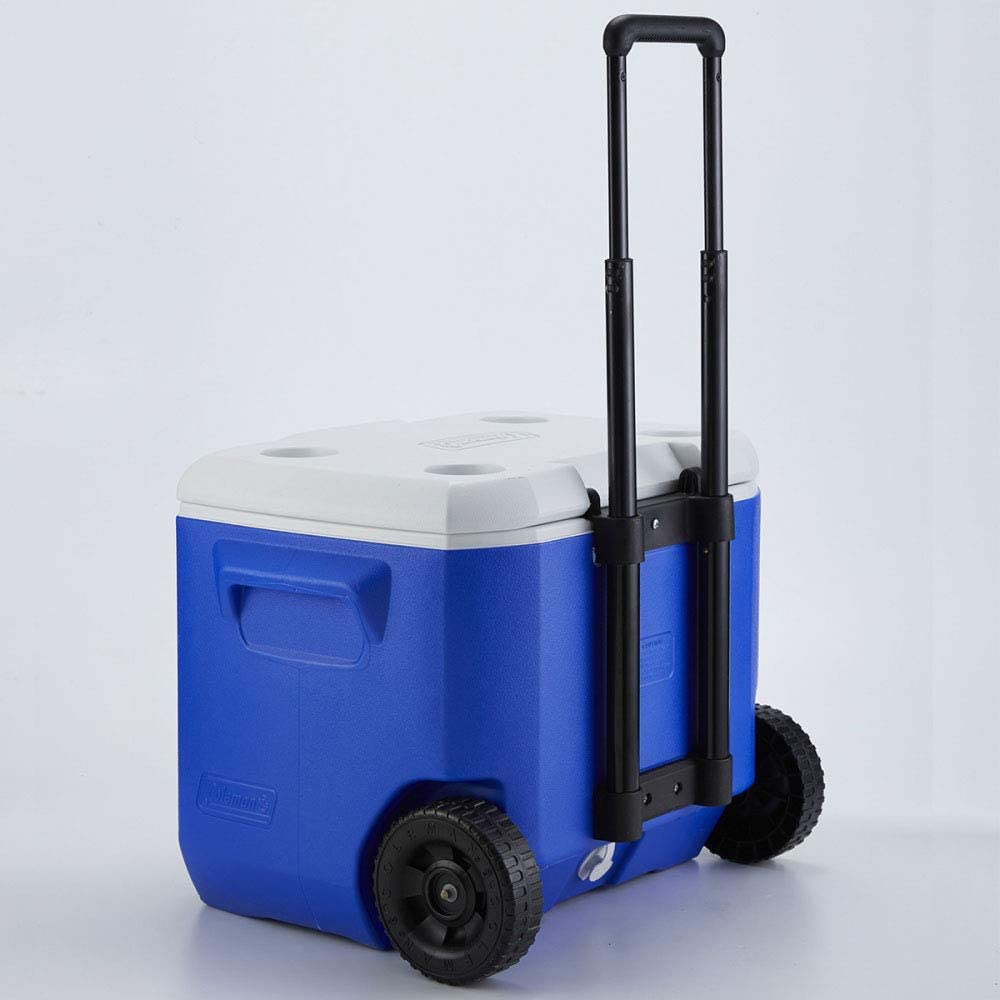
Image by Amazon
However, if camping with a smaller group, a thermal bag may be sufficient. Thermal bags are more practical to carry and take up less space in the car. One recommended model is the thermal bag which is efficient in keeping the temperature cool and is easy to carry. Overall, whether you choose a cooler or thermal bag, having a way to keep your food and drinks cool is essential for a comfortable and enjoyable camping experience.
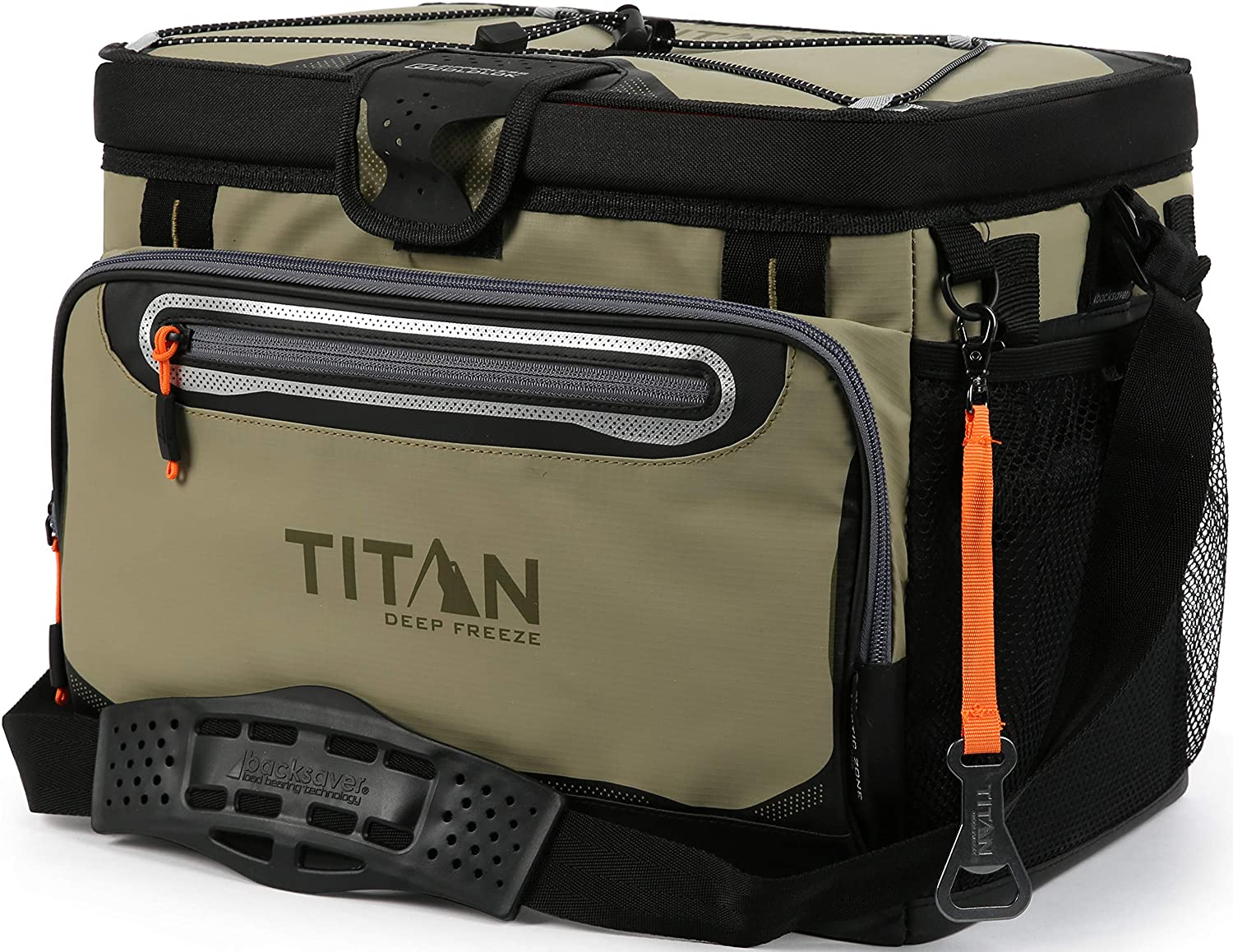
Image by Amazon
Extra Items
The items listed below may not be essential for your first camping trip, but they certainly provide greater comfort to your camping experience.
Tent: provides coverage against rain or sun. There are tents with articulated assembly and insect protection nets.
Tarp: a multi-purpose item that can be used as a base to put your tent on, avoiding direct contact with the ground and any damage, as well as cover and protection.
Emergency whistles;
Rain jacket and poncho;
Hiking poles if you are backpacking;
Portable table.
Camping can be a very enjoyable or traumatic experience, depending on how well-prepared and informed you are about the location and what to bring for your first experience.
We hope this guide helps you and that you have a sensational camping trip.
Remember, when you pack up and return home, do not leave any garbage or waste behind. Help the environment by doing your part and “leave no trace“!




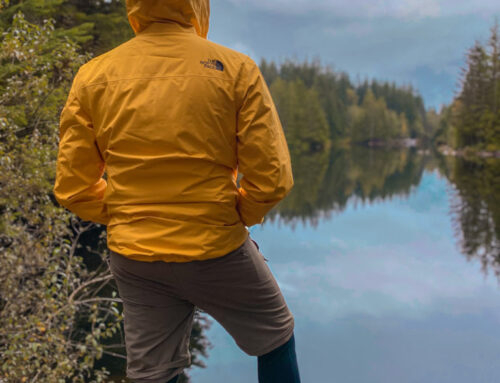
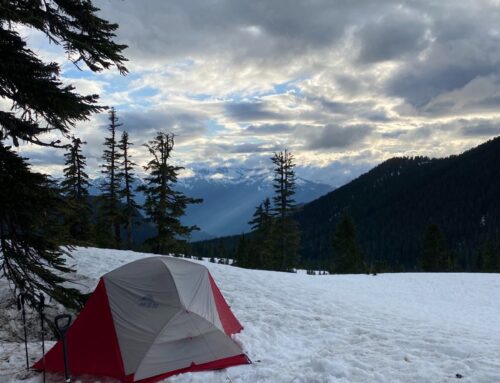
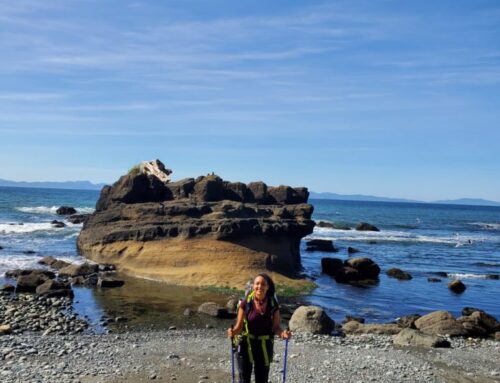
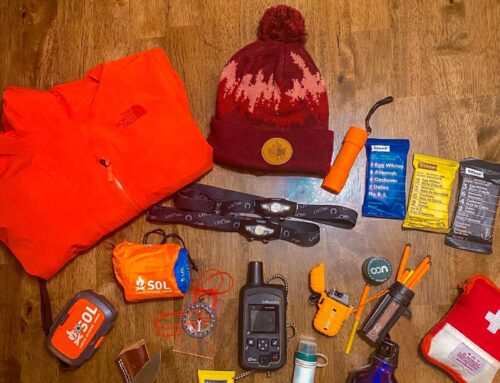
Leave A Comment